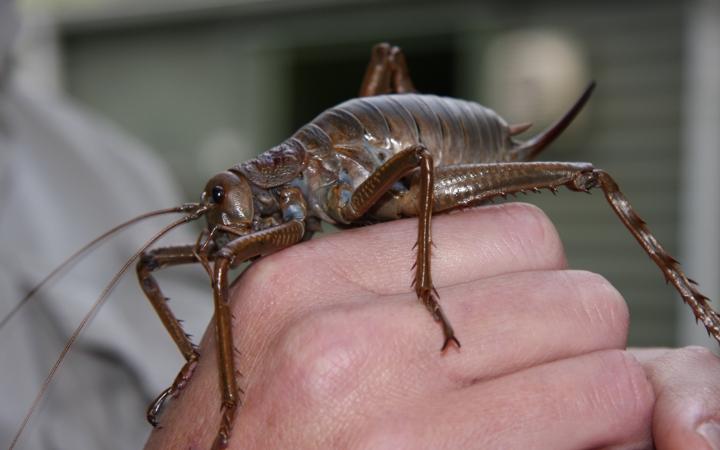
Zoo's own wētā workshop produces rare giants for release
3 April 2014, 12:56PM
Auckland Zoo
Following unprecedented breeding and rearing success, Auckland Zoo is today releasing 150 of New Zealand’s largest giant wētā, the wētā punga, onto pest-free Motuora Island in the Hauraki Gulf.
A further 150 of these ‘Nationally Endangered’ invertebrate heavyweights (one of the world’s heaviest insects that can weigh as much as a sparrow) will be released onto Tiritiri Matangi next month. Another 200 are scheduled to be released to the wild later in the year, and a group of adults will also remain at the Zoo to help breed a second generation for future releases.
All offspring have been bred from six male and six female wētā punga, translocated to the Zoo in May 2012 from Little Barrier (Hauturu o Toi) - the only place they are now naturally found, as part of the Department of Conservation’s (DOC) wētā punga breeding recovery programme.
Auckland Zoo’s curator of ectotherms and birds, Richard Gibson, says for the first time, new techniques involving rearing the insects in groups as well as individually, were trialed within the Zoo’s temperature controlled weta facility.
“Because we were hatching so many, we established groups of anywhere from five up to 100 animals, in different sized enclosures. Within these we also created ‘wētā punga apartment blocks’ from bamboo and hosepipe to give individuals the necessary hiding places. In addition, we had to ensure adequate height and hanging places for the weta to moult successfully – which they do 10 times to reach adulthood,” says Mr Gibson.
“It’s been a pretty intense period of work for the team, but an absolute privilege to be helping such an iconic threatened species. We’re delighted to have achieved a 95% success rate in rearing animals individually, and around 50% success rate with the groups - significantly higher than we expected. The purpose of any captive rearing for release like this is to ensure a high survival rate in the wild. The 150 wētā punga we’re releasing today are close to adulthood and not far off producing babies of their own, which is great, and because of their age and size have an optimum chance of survival.”
DOC scientific advisor, Chris Green, explains this is part of the wētā recovery group’s plan to establish several populations around the gulf, ensuring the survival of the species and their long term security.
“By using captive breeding we can now transfer several pioneer populations to other islands, improving the chances of the species surviving in the event of a catastrophe on Little Barrier wiping them out for ever,” says Dr Green.
Along with other iwi, Ngati Manuhiri, the guardians of the wētā punga, are fully supportive of this programme and will be represented at the release.
Besides its off-display breeding population, a number of wētā punga are also on public display in the night area of the Zoo’s Te Wao Nui precinct.
